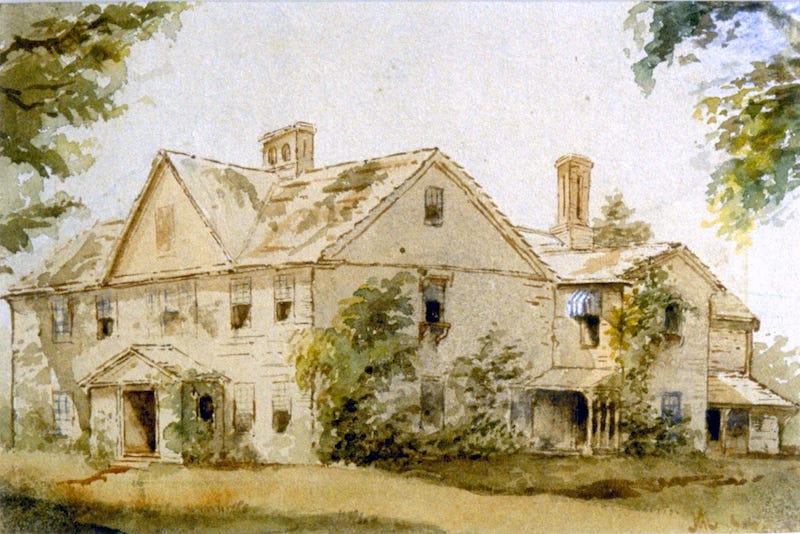
The food the March girls eat in Little Women is a fascinating fusion of the author’s biography and her imagination of family life, surprising us with insights into the ever-oscillating relationship between truth and fact in a novel, and in a life. One of the great innovations of Little Women was that Louisa May Alcott took girls’ intellectual and moral lives, and, therefore, domestic life, seriously; the kitchen was not a place where tasks were performed mechanically, but a space for intense moral questions and the life of the mind. Louisa wrote of her mother, “All the philosophy in our house is not in the study; a good deal is in the kitchen.” The March girls think all the while they are doing their household work; they can’t go to college, but they think about war and peace, slavery and freedom, anger and forgiveness, love and death, as they beat carpets and their bread rises. As Abigail Alcott, the model for Little Women’s Marmee, wrote, “We are all part and parcel of this condition of things, and I for one am a restless fragment …”
The food of the March household is a wonderfully faithful representation of what a nineteenth-century white New England family of genteel poverty would have eaten during the Civil War and Reconstruction years. Like still-life paintings, the novel’s meals are a realistic record of the region’s foods, and in particular the ways people of English heritage often translated indigenous ingredients into English forms, like the squash recipe that is the home-loving Beth’s only contribution to the family newspaper, The Pickwick Portfolio. The blancmange (made by domestic Meg) that Jo takes Laurie when he has a cold was a staple treat to tempt the appetite of a sick person, a creamy, nourishing pudding easily swallowed. (Edna May Lewis has an elegant recipe for blancmange in her Taste of Country Cooking; it is a sweet well worth reviving.)
Alcott’s literary food remains Anglocentric throughout the three March novels; the married Jo of Little Men is “reduced … to despair” when her German husband requests cabbage soup with herrings and cherries, “for German cookery was beyond her.” But most of the historically recognizable food the March daughters eat is startlingly unlike what Louisa May Alcott and her sisters grew up on.

Support our work:
Subscribe to receive a little book review every few days in your in-box
Or sign up for our free updates
Building a connected world through reading

The Marches’ food might seem austere to the readers of the novel. In the famous Christmas chapter near the book’s opening, the girls give up their festive breakfast of cream, muffins, bread, and buckwheat cakes to a poor family nearby, contenting themselves with bread and milk. When their moneyed neighbor, Mr. Laurence, hears of their sacrifice, he sends over a reward of a fairy tale feast of cake, fruit, French bonbons, and “ice cream—actually two dishes of it,—pink and white …” The gift is an emblem of pure luxury; this imagined feast is also an act of unspoken defiance, since Louisa’s transcendentalist father, Bronson, scorned pleasurable food. Invited to speak at a Fourth of July church picnic, he spurned the pastor’s wife’s carefully made cookies, accusing her of “Vanity, and worse than vanity!”
Louisa, though, offers her March girls fruit in wintry New England, imported confections, and ice cream and cake, the last two representing formidable muscular labor and, in the case of the cake, complicated and continuous attention to the fire-fueled oven, so that the effort spent beating the dough was not wasted by uneven baking. (Note the absence of chocolate; Americans of the period were familiar with drinking chocolate, but flavoring food with chocolate was a practice that emerged after the Civil War years, when it became available in squares.) But for the Alcott sisters, not only the ice cream and cake, but even the bread and milk would have seemed luxurious, an unattainable dream of plenty. The Alcott girls were always hungry, always on the brink of homelessness and on the move from lodging to lodging until they were grown. The nomadic household followed the work sought by Abigail Alcott as the sole support of the family, with supplementary contributions by relatives and friends, and only rarely by her husband, who had a quasi-religious conviction in his own genius and spent his life protecting it from employment unworthy of it. Abigail wrote of him in her journals and letters with varying degrees of idealization, anger, and steely assessment: “Mr. Alcott cannot bring himself to work for gain, but we have not yet learned how to live without money or means.”
Read Part Two here!
Patricia Storace’s most recent book is the novel The Book of Heaven, in which the intimate histories of eating and storytelling are also deeply entwined. She is also the author of Dinner with Persephone: Travels in Greece and a book of poems, Heredity. This is the latest in her series of diaries on cooking and reading for Book Post. Read the first, second, third, fourth, and fifth.
Book Post is a by-subscription book review service, bringing short and well-made book reviews by distinguished and engaging writers direct to your in-box. Subscribe to receive our book reviews and support our writers and our effort to grow a common reading culture across a fractured media landscape. Coming soon: Elaine Blair on Sylvia Townsend Warner; recently: Priyamvada Natarajan on Cecilia Payne-Gaposchkin.
Mac’s Backs Books on Coventry, in Cleveland, Ohio, is Book Post’s current partner bookstore. We support independent bookselling by linking to independent bookstores and bringing you news of local book life as it happens in their aisles. Support your local bookstore now! Their futures are imperiled. We’ll send a free three-month subscription to any reader who spends more than $100 at Mack’s Backs during our partnership. Send your receipt to info@bookpostusa.com.
Follow us: Facebook, Twitter, Instagram



Lovely piece. After 30 or more years, I remembered the pink and white ice cream.